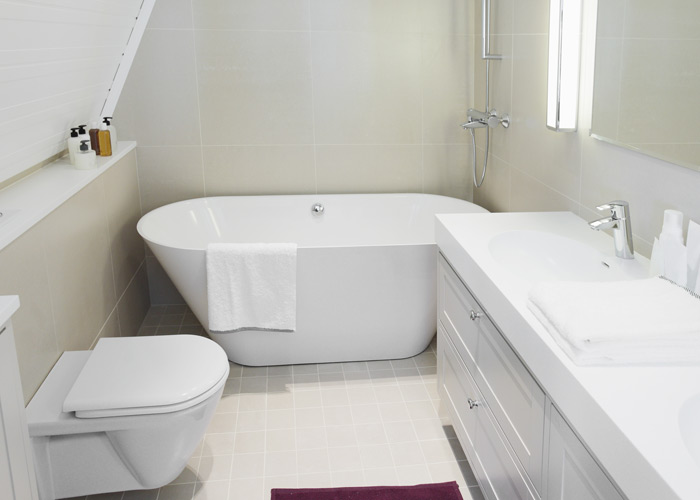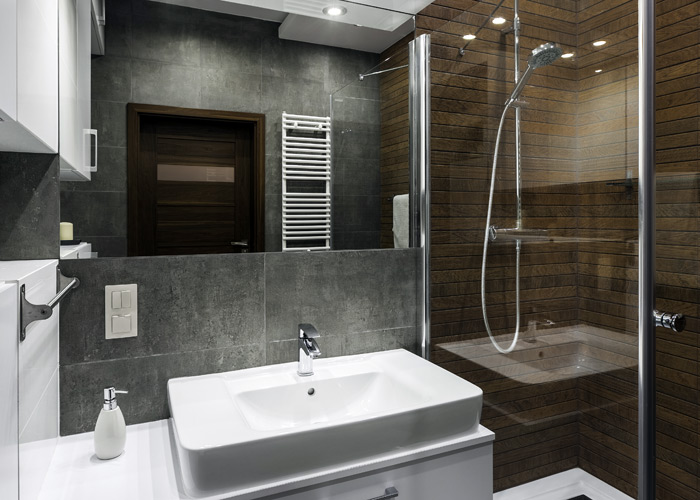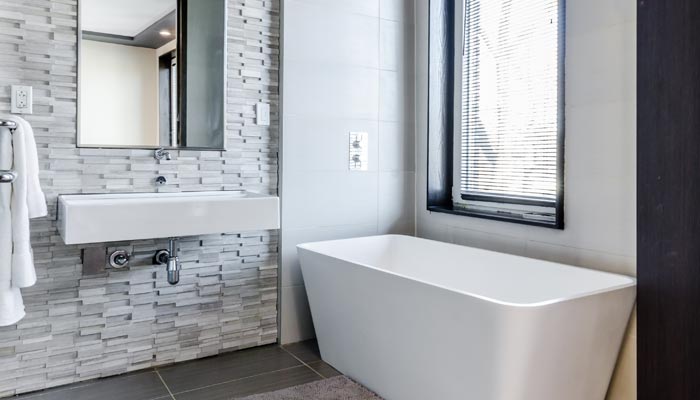It’s time to remodel your bathroom, and your best bet is to set aside a couple of DIY weekends. While remodelling your bathroom could be daunting, you can’t go wrong in ensuring your project is carefully done and financially rewarding.

However, the best way to avoid a bathroom remodelling catastrophe is to carefully plan ahead of the project with aids like Letta London’s modern bathroom design guide. Whether you have a traditional or contemporary bathroom design, you’ll need to answer some essential planning questions before launching into a financially viable bathroom remodelling project that matches your dreams.
What Level of Bathroom Remodel Do You Want?
Here’s the first question you need to answer before starting your DIY bathroom remodelling project. A surface-level remodel might be perfect if you’re satisfied with the bathroom’s general layout, surfaces (walls, ceiling, floor), and size.
At this level of bathroom remodelling, you avoid replacing as many fixtures as possible. You intend to cover up or repair outdated materials. Fortunately, the materials required for this level of bathroom remodelling are cheaper than replacement fixtures.
What’s the Projected Cost?
How much are you willing to spend on your DIY bathroom remodelling project? While bathroom remodelling comes in varying costs, it can be expensive. A surface-level bathroom remodelling project could cost several thousand dollars. You want to plan on how much you can afford and plan towards it.

Get All the Necessary Tools
You probably already have a home improvement toolbox in your home. However, we’ve put up some handy tools for your DIY bathroom remodeling project. They include:
- Goggles
- Gloves
- Caulking gun
- Silicone sealant
- Tape measure
- Spackle knife
- Stud finder
- Power drill
- Safety mask
- Pry bar
- Chisel
- Adjustable wrench
- Flathead screwdriver
- Chalk line
- Extension cord
- Utility knife
- Cordless drill
You can rent these tools at various home improvement stores at a relatively affordable rate. That’s if you don’t have a relative or friend who has some to lend you. Once you’ve answered the fundamental questions and have the tools, you can begin.
DIY Steps to Remodelling Your Bathroom
Depending on your needs or wishes, you may not need to execute every DIY bathroom remodelling step we’ll highlight next. However, here are some helpful DIY tips for remodelling your bathroom.
1. Remove Some Bathroom Fixtures
Your DIY project could begin with gutting the space, which includes removing the plasterboard and any fixtures that need replacing. Gutting the bathroom starts with shutting off the water and removing the toilet to avoid unsavory overflows.
Then you want to remove or cover up the bathtub. You may also remove the bath tiles if you intend to reintroduce a new shower design. Remove all insulations where necessary. Lastly, remove the cabinets, vanity, mirror flooring, and other fixtures you intend to replace. Meanwhile, wear a safety mask, gloves, and goggles to ensure maximum protection.

2. Install the New Fixtures
Once you’re done gutting the bathroom, you can install new fixtures, such as a new shower or flooring. Remember to replace any signs of rotting wood before installing a new tub to avoid additional damage.
Ensure your new tub perfectly fits into your new décor and tub space.
If you have enough space, consider setting up a shower and bathtub combo or other shower room styles you desire or need. Then you can start prepping your subfloor towards installing new flooring. You want to consider what flooring type you need, including the popular tiles or affordable vinyl/laminate tiles that are more DIY-friendly.
When installing a tile, mark reference lines perpendicular (at 90°) to the wall with the longest continuous line using a mason’s chalk. Doing so will help you keep the tiles in a straight line as you array them throughout the space.
3. Hang Your New Drywall and Start Painting
The next step involves cutting the new drywall to fit around the vanity, shower walls, and other features. Consider covering the seams and filling in gaps with drywall mud and tape when hanging the drywall. You may also want to coat the cement board with a waterproofing membrane like Redgard to prevent water damage.
Painting the walls is one of the easiest and most affordable tasks to brighten the entire space. Consider using paint with a semi-gloss finish, which makes the walls easy to clean. Semi-gloss finish also makes the walls resistant to mildew and mould.
4. Install Vanities, Cabinets, Lighting, and Plumbing
Here’s where you need the vanity, cabinets, and other significant fixtures on your bathroom renovation list. After installing the vanity, you can set up the faucet and sink. By this point, you’re ready to install other fixtures like mirrors, cabinets, etc.
If necessary, you may also update your new lighting and electrical fixtures. That might mean you’ll remove the power outlets or fix other wirings as necessary. A caveat is that you might require an electrician’s services here if you’re inexperienced with wiring. Then don’t forget to reinstall your toilet or replace it.
Conclusion
A DIY bathroom remodelling project is achievable with adequate planning and resources. Ensure to plan adequately and get all you need to have an efficient DIY project in renovating your bathroom.




